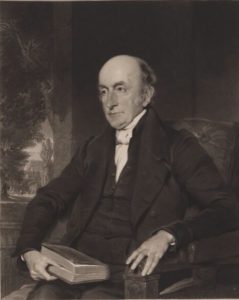Warwick Unitarians have been meeting in Warwick for over 375 years. Our first congregations met in 1635, during the reign of Charles 1st in the Castle grounds by kind permission of the Earl of Warwick, who was sympathetic to our cause. By 1711 we had our own premises, on the site of the present Castle Orangery. When the mediaeval bridge became unsafe, the then Earl of Warwick said that he would build a new one, in exchange for various properties which he wished to pull down to extend his gardens. Our first purpose-built chapel, known as the Presbytery was demolished and the Earl gave us the land on High Street where our present chapel was erected in 1780. Just a simple building, away from the main road, no chancel and a large area to the rear for a burial ground.

Just nine years after the chapel was built our most famous minister came to Warwick, William Field aged just 22 years. He was ordained the following year with the scientist Joseph Priestly attending, and served the congregation for an amazing 54 years. Not only did he look after the chapel here in Warwick, he was also pastor and afternoon preacher at the Presbyterian chapel in Kenilworth.
One of his first achievements was to build a Sunday school, some time after 1806 and certainly before 1815, where poor children could be taught to read and write.
At the beginning of his ministry the dissenters were loathed, their places of worship attacked and burnt. Our sister church at Kingswood had to be completely rebuilt after its predecessor, Joseph Priestley’s chapel, was totally destroyed by rioters in 1791.
As time passed things became easier and Mr. Field worked hard for the townspeople of Warwick not just his congregation. The public library owns its origin to his active exertions, and he was a founder of the Warwick Advertiser. He also found time to produce Field’s Guide to Warwick an in depth account of the history of Warwick.